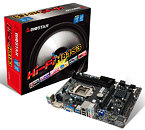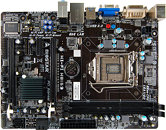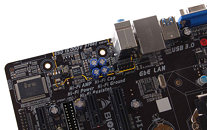Monday, October 14th 2013

BIOSTAR Releases Hi-Fi H81S3 Micro ATX Motherboard
BIOSTAR has released their newest micro-ATX motherboard based on the Intel H81 chipset, the "Hi-Fi H81S3". The board supports the Intel 4th generation Core i7 and Core i5 processors. It features Intel single chip architecture with HD 4600Graphics, along with a new integrated memory controller that will run at speeds up to 1600MHz. The H81 chipset has two SATA 6Gb/s ports (plus four SATA 3Gb/s ports), and two USB 3.0 headers. The "Hi-Fi H81S3" supports one DIMM per memory channel for a maximum of two sticks of RAM for up to 16Gigs. The "Hi-Fi H81S3" is a great option for small form factor systems where you rarely have more than one discrete card and two SATA drives. Being Intel based boards, they will also feature Intel Rapid Start Technology and Intel Smart Connect Technology.These boards will proudly show off BIOSTAR's in-house technology, such as audio and power regulation upgrades such as Hi-Fi Power and Hi-Fi AMP. The video output includes HDMI with HDCP which allows full video & audio support via standard DVI output.
The "Hi-Fi H81S3" is also PCI-E Gen 3.0 and USB 3.0 Ready. PCI-E 3.0 is the next evolution of the ubiquitous and general-purpose PCI Express I/O standard and USB 3.0 gives USB the fastest data transfers at 5 Gbps.
The "Hi-Fi H81S3" is also PCI-E Gen 3.0 and USB 3.0 Ready. PCI-E 3.0 is the next evolution of the ubiquitous and general-purpose PCI Express I/O standard and USB 3.0 gives USB the fastest data transfers at 5 Gbps.



9 Comments on BIOSTAR Releases Hi-Fi H81S3 Micro ATX Motherboard
I wouldn't even trust this with an i3, only Pentiums and Celerons.
Otherwise, it could be interesting for an HTPC without a discrete sound card.
too bad they dont give any cooling for vrm and its just 2 + 1 vrm?
Just like any $50-$60 board - plug in high-end CPUs/GPUs at your own risk (power it on and hope there's no shower of sparks/plume of smoke). Only a real cheapskate would try it anyway, trying to game on a $500 rig (guilty!). For Grandma's email rig, this is perfect.